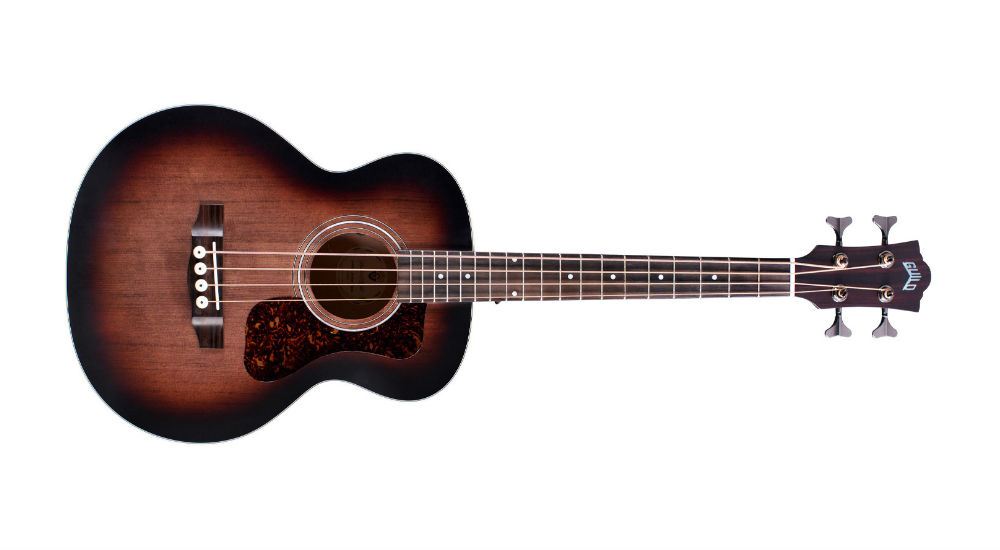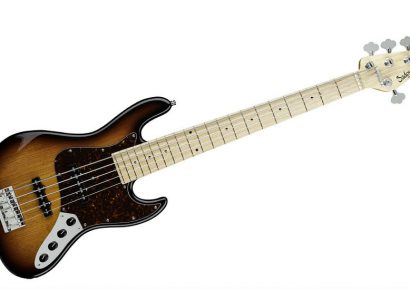A welcome hybrid of the double bass and electric/acoustic, these portable bass guitars have been back in vogue since the Unplugged boom of the ‘90s. Lightweight and fast, owing to its 3/4 size, the Jumbo Junior would be at home played acoustically around a campfire or on a concert stage. While the neck length and body size may not appeal to all bass players, once you’ve played this guitar for ten minutes you’ll be well used to its scale.
I have long been a short-scale bass enthusiast, having owned a couple of Hofner Beatle basses and a Fender Musicmaster in my time, so this instrument feels right at home in my hands. Much more flexible in sound and use than other recent small uke bass designs, the Junior takes no time to get used to and its petite size will probably have you hooked from the first play.
Plugging this bass directly into my audio interface gives an unblemished and bright tone for recording. It tracks well with hardly any fret noise and again, has a nice retro sound to it straight up. Recording the bass acoustically straight into a condenser microphone is another option. By simply moving the body of the bass, different tonal hues are achievable. However, once you are getting the sound you want, don’t move! An acoustic bass like this will be unforgiving with peaks and low frequency wow if you move around while recording it this way. That said, a nice warm acoustic bass tone can be achieved easily by playing and recording as statically as possible. I preferred the recorded tone and response of recording the Jumbo Junior this way.
Using a D.I. into a small powered wedge produced a clean signal and a very loud response from the onboard pickup system. Certainly, using this bass in a loud and live situation would necessitate being careful with levels to negate any feedback issues. A Fender Rumble 500 bass amp was also used to demo the Junior. This amp was set to the vintage mode and worked nicely as a complementary system to amplify this instrument. My only, small complaint is there doesn’t seem to be much sonic adjustment with the single tone control. But this is a small quibble that could be rectified by using an EQ pedal.
The ebony fretboard, bridge and bone nut saddle on the Junior help to produce a full, woody bass sound, and phosphor bronze strings make each note stand out in the mix. A purist might want to restring the Jumbo Junior with flat wounds, but this would be a mistake IMHO and leave you with a flatter, more muddy sound and bass response. The iconic Guild Tortoiseshell pickguard is included, giving it a cool, retro look along with mother of pearl inlays and headstock logo.
At its pricepoint, the Jumbo Junior would make an excellent entry-level bass for any musician wishing to join a solid rhythm section, and its tight woody tone is perfect for the home recording enthusiast.

